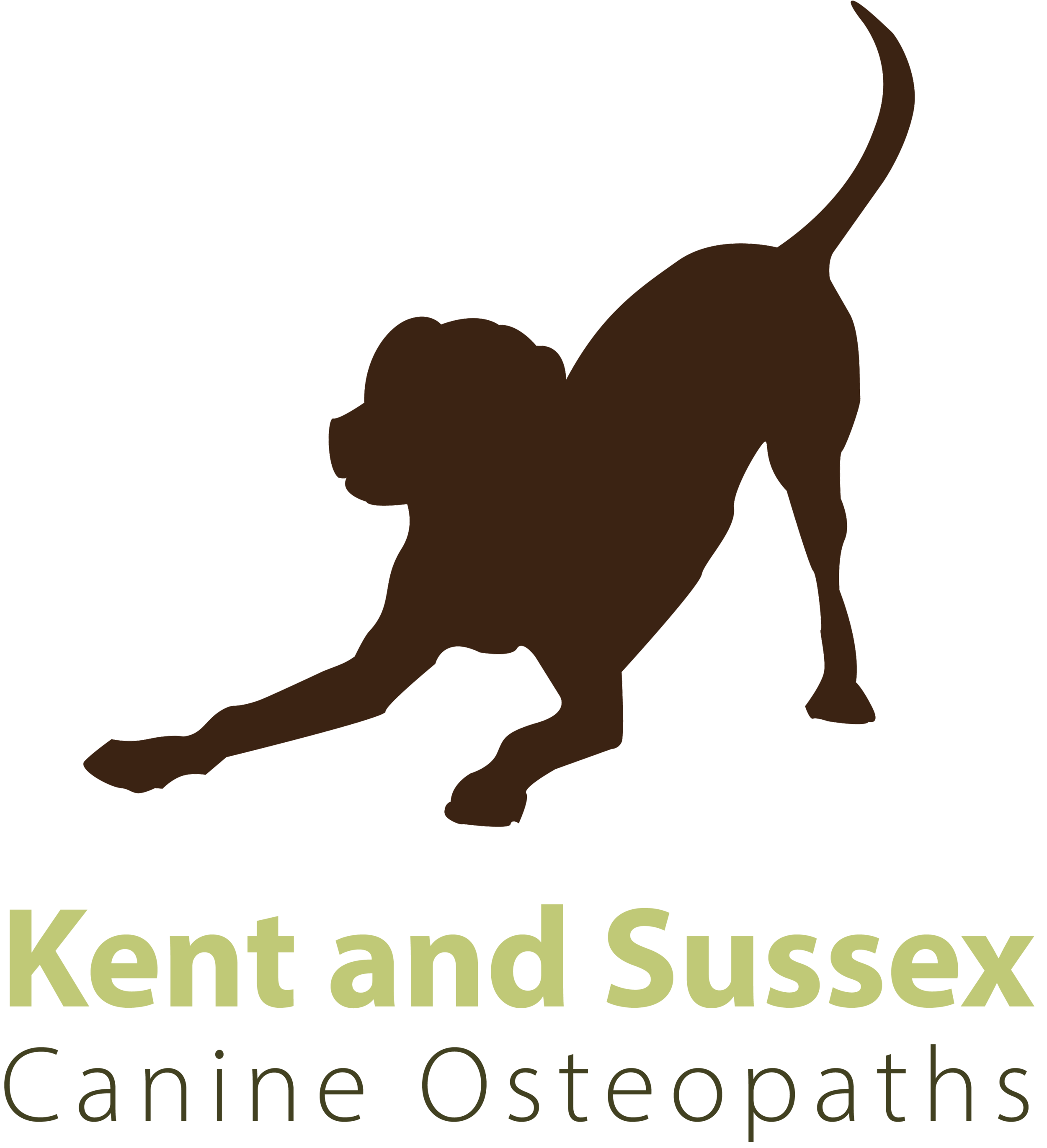What is involved in a canine osteopathy consultation?
A detailed case history will be taken, and a thorough examination carried out. This might involve watching the dog walking and running as well as specific mobility testing of affected joints and tissues.
The dog's comfort and welfare are paramount at all times, the aim of treatment is to be a pleasurable experience.
Treatment will involve a variety of hands-on techniques to relax muscles and help improve the mobility of joints. Advice on rehabilitation exercises may also be given if appropriate.
Does my vet need to know?
Absolutely. It is illegal for anyone to treat an animal without the consent of that animal’s vet. We will contact the vet to request permission prior to the initial consultation.
How do I know if my osteopath is qualified?
Animal osteopaths must first qualify as human osteopaths, undertaking an accredited degree programme, and must be registered with the General Osteopathic Council.
How many treatments will my dog need?
This is dependent on the nature of the problem, the age of the dog and any underlying medical conditions the dog may have. The aim is to return the dog to optimum function as quickly as possible.
How will my dog feel after treatment?
Although often gentle and relaxing at the time, osteopathic treatment can be quite tiring for dogs. They may also experience some discomfort or stiffness for a few days after treatment. Generally, we would advise reduced exercise for a 2-3 days afterwards, any specific advice will be given at the time of treatment.
Where can I find out more about osteopathy?
The following websites have lots of information about osteopathy:
Society of Osteopaths in Animal Practice https://uksoap.org.uk

